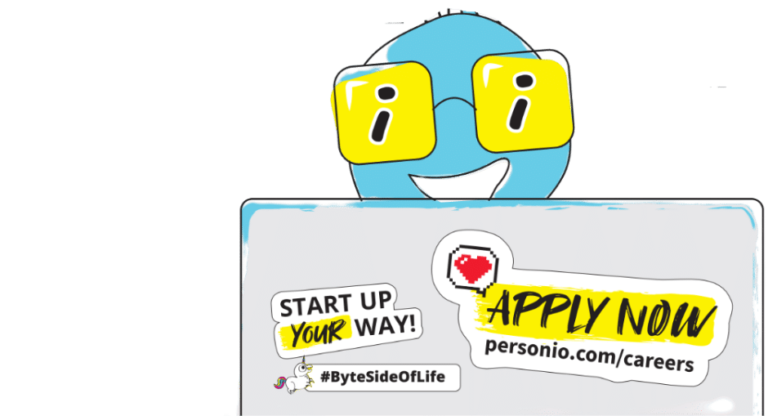
Our weekly HR newsletter
Stay ahead with the latest in HR, delivered straight to your inbox.
Subscribe here11. August 2022
Battling Burnout: Building an Effective Work-Life Balance

Thanks to smartphones, Zoom meetings, and social media, we’re more connected than ever before. From a professional perspective, this connectivity gives us more flexibility and enables us to work from almost anywhere. Taking a meeting on the train, maintaining relationships with remote employees, working across timezones – the options are endless.
But as much as this gives us freedom and flexibility, it can also stop us from ever disconnecting from our work. Constantly being available and blending our personal and work lives can mean we’re never allowing ourselves to step away and properly recharge.
It’s no surprise, then, that recent studies have shown that employees’ stress levels are increasing dramatically. According to the World Health Organization, workers are experiencing excessive and unmanageable stress from growing demands and shifts in working environments. This is naturally leading to an uptick in mental health struggles and, ultimately, burnout.
Work-life balance is a term we’re all familiar with – and never has it been more important than right now. It specifically addresses the issues we’ve mentioned above: how to strike the balance between constant connection to work, and disconnecting to recharge and enjoy life outside of work. But we know it’s easier said than done, and the responsibility rests with both the employer and the employee. Today we’ve focused on a few strategies that employees can use to take more control of your own work-life balance, right now. While these can also be easier said than done, we believe that taking even one small step in the right direction is worth the effort.

1. Manage Your Time
A popular way to better manage your time at work is to create blocks in your calendar. These can be event-specific, like a blocker to finish that lingering project or to prep for your next meeting. But they can also be proactive spacers, like 30 minutes each morning to take care of emails or an hour once per week for those ad hoc topics that always manage to crop up.
These calendar blockers allow you to set specific focus time and prevent others from filling your calendar. Having some proactively-blocked extra minutes in the day can give you the time and space you need to deal with unexpected tasks or projects that might otherwise spin your day out of control.
You can also use time-management apps such as Todoist. They work like to-do lists with a built-in time management function. This way you can keep track of what needs to be done and how much time you should plan to spend on it.
2. Say “No”
This tip goes along with managing your time. Managing your capacity – and saying “no” to things you don’t have time for – is a key component of battling a too-large workload. Saying “yes” to something that you know you don’t have time for isn’t helpful to anyone, including yourself. If you do not have capacity, you do not have capacity.
But being realistic with your time is only the first step. The second, equally important aspect, is communicating your capacity. If you don’t have any, communicate that with your teammates, manager, and stakeholders so everyone is on the same page. Together you can consider a few solutions, like using freelancers to lighten the load or aligning with your manager and team on which topics to prioritize. This prioritization can help you say “no” to things lower on the list, and has the added bonus of helping ensure that you’re spending your time on what matters most.
3. Actively Detach From Work
No matter if you work in the office, at home, or from a coffee shop around the corner, setting specific stop and start times can help you actively detach when your working time is up. This can be difficult to do when working from home (when your home office is literally right there) or if you have work email or chat apps on your phone. Setting and adhering to a firm stop time means no more reading emails or checking Slack “just in case” until your next work start. Even if you work flexible hours and are stopping work at 5:00pm to spend time with family and picking it back up again at 9:00pm, detaching from work means actively not working between your stop and start times.
When we are constantly thinking about work in our off hours, we deprive our minds – and bodies – of the opportunity to relax and recharge. One way to avoid this is by setting habits that help you get in and out of the work mindset. For example, designate a spot in your home that is only for work. When you leave that spot, leave the work also. If that’s not an option (or even if it is!), turning off chat and email notifications is an easy way to help yourself detach in your off hours.
Forming a post-work habit, like taking a walk or reading a book, can also cue your brain to switch out of working mode. Or, if you’re feeling fancy, put on a work outfit even if you’re working from home. Changing out of it into your comfy home clothes can be another way to switch into your off hours mindset!

4. Schedule Time for Physical Activity
We all know we should, but most of us don’t do it enough. Taking the time to move and exercise your body is a key way to manage stress and reduce its effects on your mental and physical wellbeing. Giving yourself time for a morning run or afternoon stretch break might remove some “productivity time” from your calendar, but the energy refresh you’ll get from taking an active break will leave you better able to tackle your next task when you return.
5. Ask for Help
Last, but certainly not least: ask for help! Stress can make us feel isolated and alone, but the truth is that we all experience stressful times – often on a regular basis. Reaching out to all the resources available to you, from your teammates and manager to workplace help and mental health experts, is just like reaching out to a healthcare provider if you break a bone: smart and necessary. Besides, prevention is always better than treatment. If you’re feeling overwhelmed, try asking for help sooner rather than later.
At Personio we focus on providing a best-in-class people experience, including making sure each one of our team members is enabled and empowered to create a healthy work-life balance. We also provide several wellbeing benefits like gym subsidies, 28 days of vacation, and mental health resources. In addition, PersonioFlex allows our people to create their own flexible balance of in-office and remote work, adapted to each employee’s individual needs. In 2021, PersonioFlex even won Remote Work Initiative of the Year from the UK Company Culture Awards.

